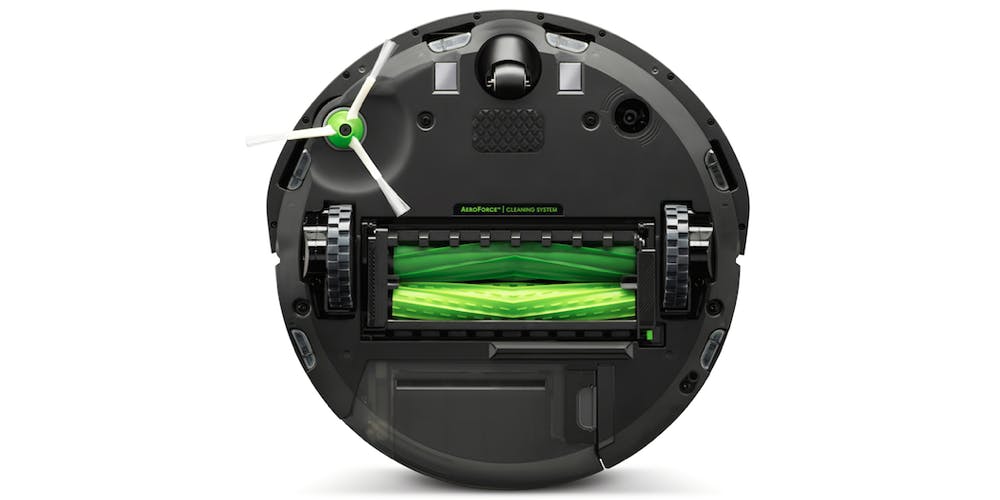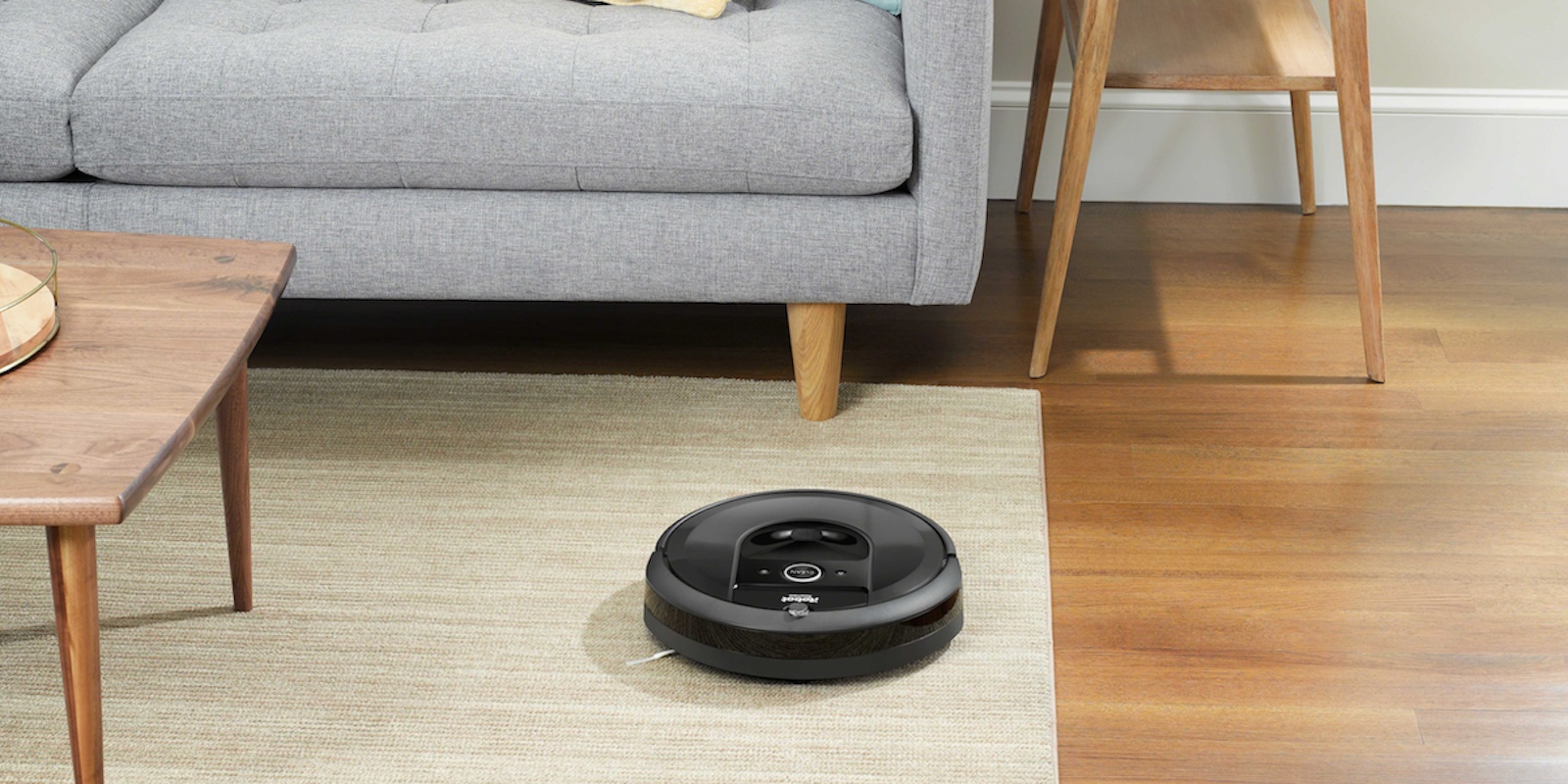Robotic vacuum cleaners have come a long way, and iRobot’s Roomba is certainly the most iconic. Sixteen years since the Roomba made its debut, iRobot is introducing the latest in its robot vacuum cleaning line, the Roomba i7, and it builds on its predecessors in truly convenient ways.
Most notably, with the Roomba i7, you no longer need to mess with the worst part of vacuuming: emptying the vacuum’s gross bin of dirt. The i7 works in conjunction with a Clean Base. When it docks, this base suctions out dust and debris from the Roomba’s smaller onboard dirt bin. This detritus is transported into a larger internal bag inside the base. When the bag inside the base is nearing full, an LED on the base will glow red. You’ll also get a notification in the accompanying iRobot HOME app.
The robot can store more dirt onboard and is quieter than its predecessors because the motor, which was previously positioned as part of the bin, has been relocated into the vacuum itself.
i7 product manager Sarah Wang said at her home, it takes several missions for the Roomba to fill up its bin, and the bag in its Smart Base can hold up to 30 bin-fulls of debris. Depending on whether you have pets, and how often you clean, this Smart Base bag can last upwards of four months before needing replacement. When it’s time to take out the bag, you can simply pull it out of the top, and a plastic slider will slot into place automatically sealing it for you for mess-free disposal.

The Roomba i7 also makes improvements when it comes to how it navigates your home. The last Roomba, the Roomba 980, was the first to use its sensor and computational smarts to build a cleaning map of your home. The i7 builds on that: While the 980’s cleaning map showed where it had cleaned, the device would wipe its memory and start fresh with each new cleaning mission. The Roomba i7 builds a map and then retains that in its memory. That means it can get a better understanding of your home’s layout and how to clean it most effectively, without backtracking over itself a dozen times. This makes it more predictable and systematic—it can finish jobs faster because it can clean with fewer turns. It also means that you can label rooms and floors in your home in the app, and set the robot to clean specific rooms.
If the robot’s knowledge of your home layout makes you nervous, Wang said that iRobot is “always conscious about security and privacy.” The i7’s clean map data is stored in the cloud, encrypted, as binary data of coordinates in your home. No images are uploaded. (This goes for the older Roomba 980, as well.)

The Roomba i7 is also Alexa and Google Home compatible, so you can command it to clean with your voice.
Wang also noted that the i7 improves on its predecessors’ performance on black flooring. In the past, black carpet or tile could confuse the robot—it’d mistake the dark surface for an edge marking the beginning of a cliff (such as a stair edge). Now, the robot has better cliff recognition so it can tell the difference between a true cliff and dark flooring.
The circular vacuum isn’t cheap, unfortunately. The Roomba i7 with Clean Base Automatic Dirt Disposal will cost you $949, a $50 savings over buying the two components individually. However, if you want the Roomba i7 alone without its magic self bin-emptying capabilities, that will cost $699, and if you change your mind later and do want the Clean Base, that costs $299. Bags for the Clean Base are $15 for a pack of three.
The Roomba i7 available in the U.S. beginning Sept. 12, and is available for pre-order now.


